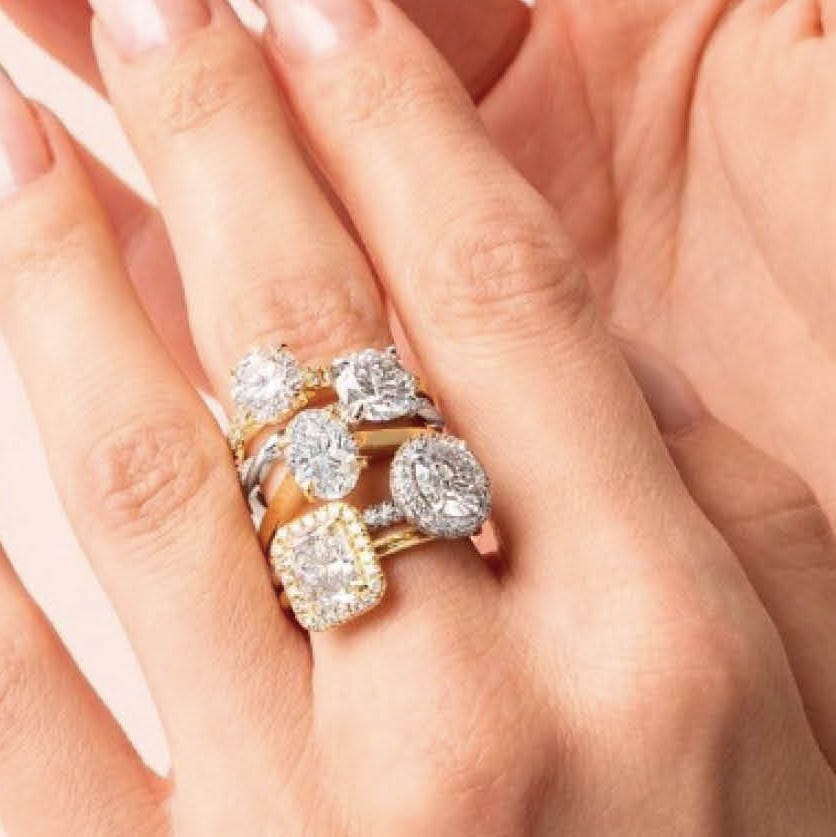In the world of fine jewelry, lab-grown diamond rings have emerged as a revolutionary choice for those seeking beauty, sustainability, and affordability. Among the various elements that contribute to the allure of these rings, the design of the claws holding the lab-grown diamonds plays a crucial role. Let’s delve into the intricate world of lab-grown diamond rings and explore everything you need to know about claws and lab-grown diamonds.
Lab-Grown Diamonds
Before we delve into the specifics of claws, it’s essential to grasp the fundamentals of lab grown diamond rings claws. Unlike traditional mined diamonds, lab-grown diamonds are created in controlled environments using advanced technological processes that mimic the natural diamond-growing process. These diamonds exhibit the same physical, chemical, and optical properties as mined diamonds, making them a sustainable and ethical choice for conscientious consumers.
The Significance of Claws in Lab-Grown Diamond Rings
Claws, also known as prongs, are the metal projections that hold the diamond securely in place within the ring setting. While their primary function is to provide stability and security, claws also play a significant role in enhancing the aesthetic appeal of the ring. The design and arrangement of claws can influence the overall look of the ring, making it essential to choose the right claw style for your lab-grown diamond ring.
Types of Claws
Traditional Four-Prong Setting: This classic setting features four evenly spaced claws that securely hold the diamond at its corners. It allows maximum light penetration, showcasing the brilliance of the lab-grown diamond.
Six-Prong Setting: Offering additional security and stability, the six-prong setting evenly distributes the pressure on the diamond, reducing the risk of it coming loose. This setting is ideal for larger lab grown diamonds.
Bezel Setting: In a bezel setting, the diamond is surrounded by a metal rim, holding it in place securely. This setting offers a sleek and modern look while providing excellent protection to the diamond.
Tension Setting: This innovative setting suspends the lab-grown diamond between two metal bands, creating an illusion of the diamond floating. While visually striking, tension settings require precise craftsmanship for optimal security.
Choosing the Right Claw Design
When selecting the claw design for your lab-grown diamond ring, consider factors such as diamond shape, size, and personal style preferences. For round brilliant-cut diamonds, traditional four-prong or six-prong settings are popular choices, as they highlight the diamond’s brilliance. On the other hand, fancy-shaped diamonds like princess, pear, or marquise may benefit from a customized claw design that complements their unique silhouette.
Benefits of Lab-Grown Diamond Rings with Claws
Sustainability: Opting for lab-grown diamond rings promotes sustainable practices by reducing the environmental impact associated with traditional diamond mining.
Affordability: Lab-grown diamonds typically cost less than mined diamonds of comparable quality, allowing you to invest in a stunning ring without exceeding your budget.
Versatility: The variety of claw designs and settings available for lab-grown diamond rings offer endless possibilities to create a personalized and meaningful piece of jewelry.
Ethical Considerations: By choosing lab-grown diamonds, you support ethical practices in the jewelry industry, including fair labor practices and conflict-free sourcing.
Customization Options
One of the key advantages of lab-grown diamond rings with claws is the wide range of customization options available. From choosing the metal type for the claws (such as platinum, white gold, yellow gold, or rose gold) to selecting the number of prongs and their style (such as rounded, pointed, or twisted), you have the flexibility to create a ring that reflects your unique style and personality. Customizing the claws allows you to enhance the overall aesthetic of the ring and create a stunning piece that is tailored to your preferences.
Durability and Longevity
Lab-grown diamond rings with well-crafted claws are renowned for their durability and longevity. The secure grip provided by the claws ensures that the diamond remains firmly in place, minimizing the risk of damage or loss. Additionally, lab-grown diamonds are known for their excellent hardness and resistance to scratches, making them an ideal choice for everyday wear. With proper care and maintenance, a lab-grown diamond ring with claws can retain its beauty and sparkle for a lifetime, making it a meaningful and enduring symbol of love and commitment.
Eco-Friendly Appeal
In today’s environmentally conscious world, the eco-friendly appeal of lab-grown diamond rings with claws is undeniable. By opting for lab-grown diamonds, you contribute to reducing the demand for mined diamonds, which often involves extensive mining operations with significant environmental impacts. Lab-grown diamonds require less energy and water to produce, emit fewer greenhouse gases, and do not contribute to deforestation or habitat destruction. Choosing an eco-friendly option like a lab-grown diamond ring with claws allows you to make a positive impact on the planet while enjoying exquisite and ethically sourced jewelry.
Conclusion
Lab-grown diamond rings with claws represent the perfect fusion of elegance, sustainability, and affordability. Whether you opt for a classic four-prong setting or a modern tension setting, the versatility and beauty of lab-grown diamonds make them an exceptional choice for engagement rings, wedding bands, or special occasion jewelry. Embrace the future of fine jewelry with lab-grown diamond rings that sparkle with brilliance and conscience.



